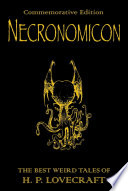Another week, another launch. I really need to find a cure for whatever illness I have that results in compulsion to built stuff. Maybe there's a Builders Anonymous group where you can go for support in coming to terms with the fact that you don't always have to solve the problem yourself. Learn to accept that sometimes things are just the way they are.
Pshaw!
A few days ago, I read this article by Kornel Lesiński. It describes the curious and interesting ways of PNGs, particularly highlighting the fact that the 8-bit PNG with an embedded alpha channel needs a lot more love than it gets. It gives you the small file sizes you get from 8-bit PNGs (resulting from the maximum 255 colour palette) but also the benefits of a full partial transparency alpha channel unlike GIFs or standard 8-bit PNGs in which pixels are on or off, nothing in between. The reason this file type is ignored is because the most common web graphic creation application in the world (Adobe Photoshop) doesn't support them. At least not yet. You need Adobe Fireworks or some other application to convert your 24-bit alpha channel images.
After a quick search turned up nothing but instructions on how to enable command-line convertion on a Linux server, I figured this would be a handy web service. Drag, Drop, Download, Done. This also gave me an excuse to play with some File API stuff. In the end, I decided to use a jQuery plugin because there was a greater chance that it had been tested and bugfixed than my own script.
With a name like that, I had to go for a retro theme. I even created a nice 8-bit spinner.
If you have a use for the service, let me know, if you want to learn how it works, browse the source. If you want to popularise the phrase “Drag, Drop, Download, Done” for this kind of simple web application, do that too.



